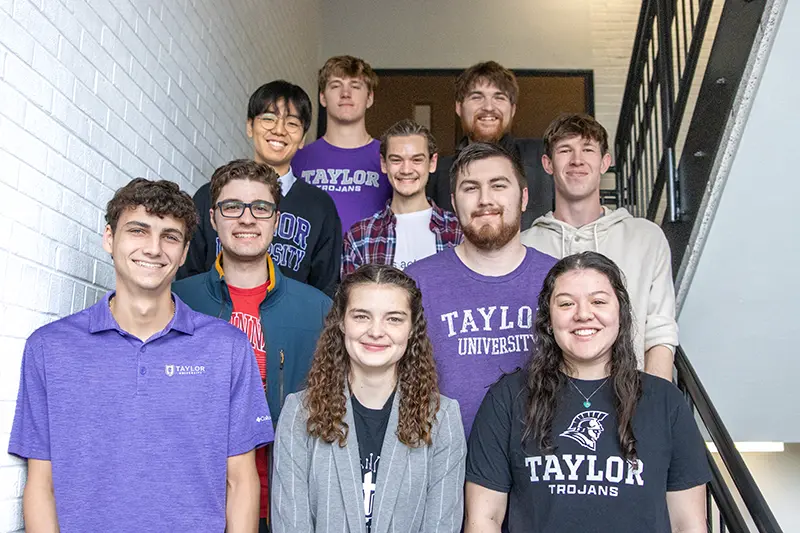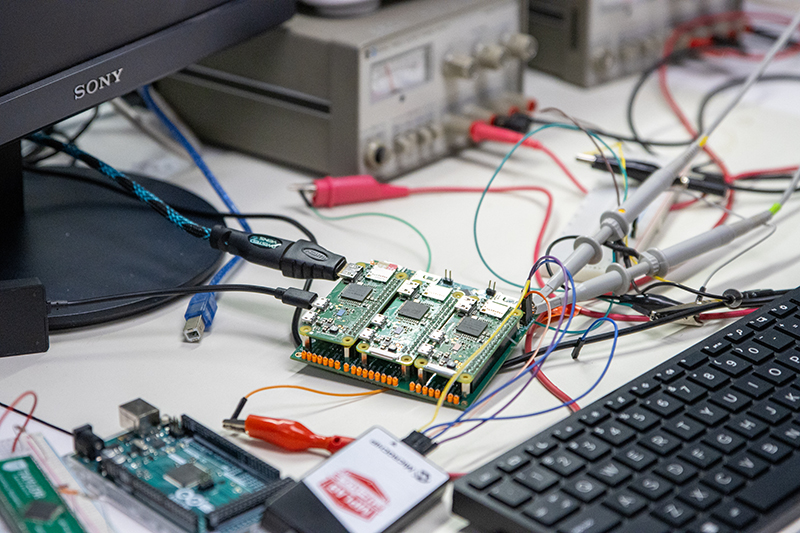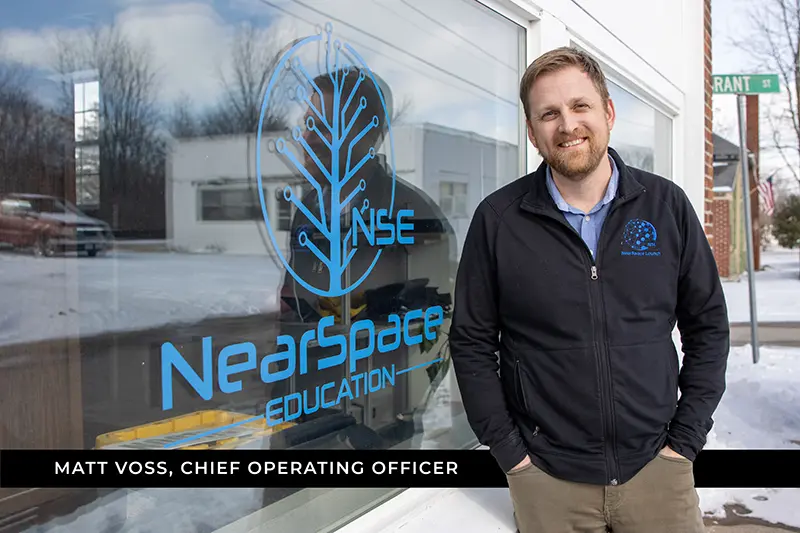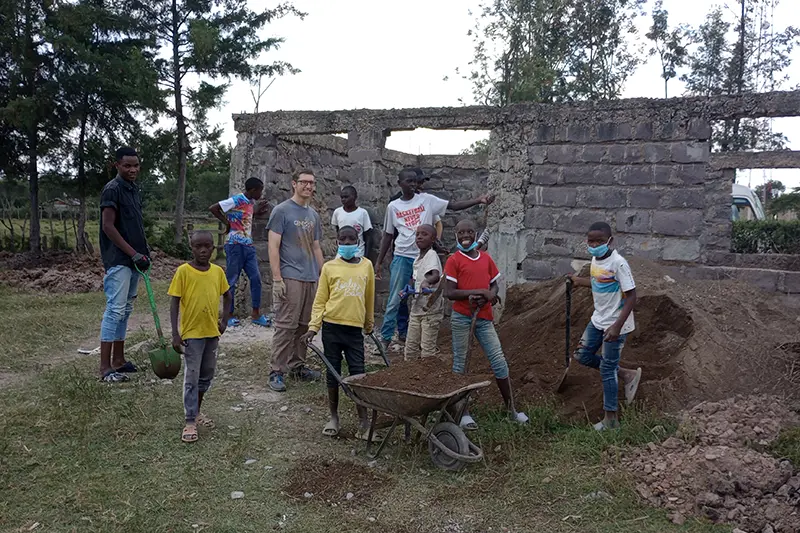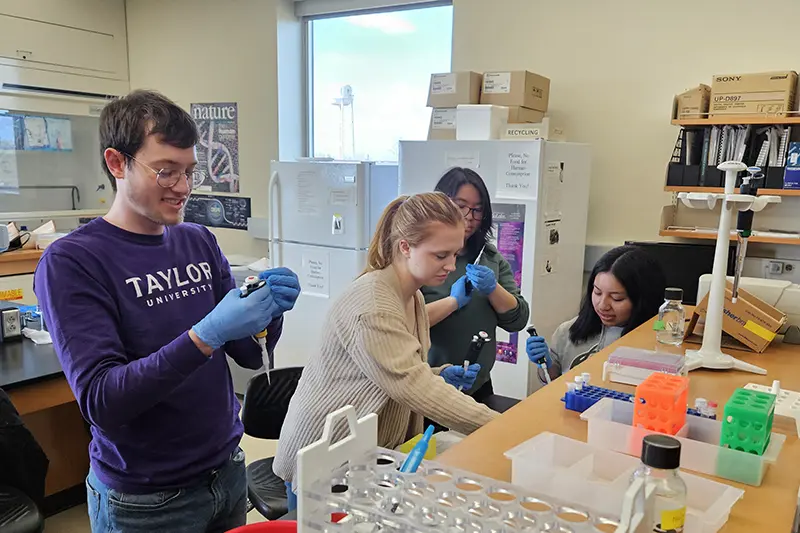Creating a robot to build massive structures in outer space may sound like a science fiction concept, but that is exactly what Taylor University Computer Engineering, Computer Science, and Mechanical Engineering students are doing.
The robot is known as “SkyForge.” Beginning in the summer of 2023 with the goal of affordability in mind, the interdisciplinary project has become the focus of classes, internships, and capstones for many students in the Engineering program. Led by Dr. Peter Staritz, Associate Professor of Physics and Engineering, Dr. Alex Roth, Assistant Professor of Physics and Engineering, and Dr. Jinran Zhang, Assistant Professor of Physics and Engineering, the project involves developing many parts of the SkyForge robot.
The long-term goal is to launch SkyForge into outer space where it will assemble structures too massive to be built first on Earth. The idea is to deploy building blocks to be constructed in orbit. These structures could include solar power stations, interplanetary transports, space stations, radio antennas, or telescopes that are kilometers-large in scale.
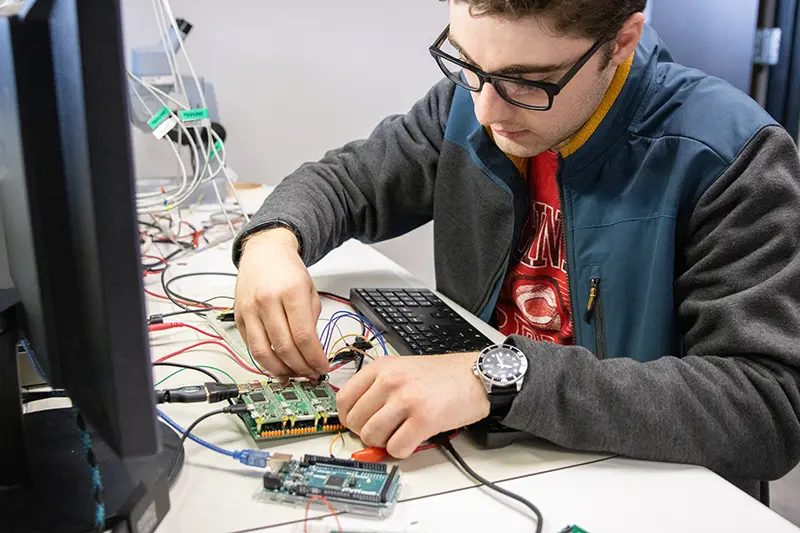
Revolutionary Computation Design
SkyForge utilizes one master controller and three low-cost Raspberry Pi computers to make up its central computation unit or “brain” instead of using high-cost, radiation-hardened computers with long lead-time. Students Josh Ellman, Ethan Hoyt, Taebaeksanmaek Jung, Tommy McWatters, Harrison Schmitt, Sameer Sikander, Nate Westrum, and Kelden Wright have developed a triple modular redundant system in which the three computers independently perform calculations at the same time and then cross-check the answers. Essentially, it is a system of data comparison and correction designed to prevent errors and ensure accuracy.
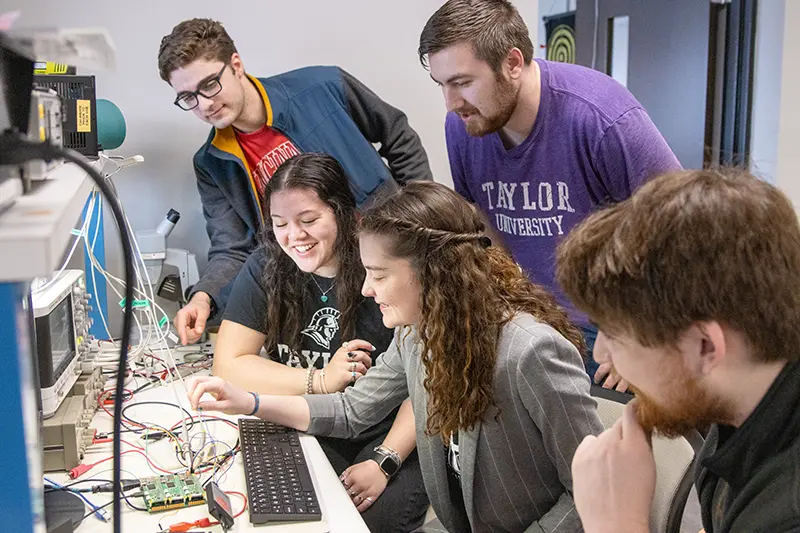
Eventually, SkyForge will intake camera and sensor data to move precisely and build structures in space. But first, the triple redundancy system must be tested in the harsh radiation environment of outer space. Any errors that occur in the computers’ computations will be the result of radiation damage. In this iteration, the computation unit will perform basic arithmetic and cross-check its answers. In the future, the computation unit will perform real-time image processing and motor control.
For testing, Taylor University is partnering with NearSpace Launch (NSL) (Upland, IN), the largest manufacturer of small satellites in the Midwest. As part of NSL’s Dream Big initiative in which multiple universities launch satellites, SkyForge’s computation unit will be installed in a satellite and sent into orbit this summer along with satellites from six other universities. NSL will provide a chassis, launch provider, solar panels, batteries, and a radio for the satellite to communicate with the ground.
Bridging Theory and Practice
Through SkyForge, Taylor students have encountered the complexity of the real world and innovated to solve challenging problems.
Dr. Staritz reflected, “The application of skills is really important to Taylor. One of the things we would like our students to do is to look at a problem and think, ‘You know what, I don’t know how to do that.’ And the next thing they think is ‘I better go figure it out.’ Because that’s what real engineering is like.”
Not only has SkyForge provided hands-on experience and career preparation, but it has contributed to students’ understanding of their field and its impact. Computer Science junior Josh Ellman shared about the collaboration skills he has gained and the value of achieving more as a team than any member could individually: “You learn co-workers’ values for the project, the struggles they might bring, and how to navigate that for your common goal.”
Reflecting on the intricacies of the world, Computer Engineering senior Tommy McWatters said, “It’s given me a much different perspective than I previously had, a much greater respect for the complexity of creation and the gift we have been given to explore how intricate it is.”
SkyForge is a project that will span multiple years. As graduating seniors conclude their time at Taylor, rising sophomores and juniors will take over their roles, ensuring the project’s progress and advancement.
